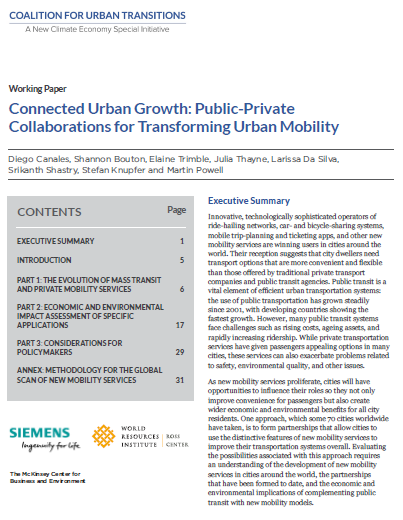Connected Urban Growth: Public-Private Collaborations for Transforming Urban Mobility


New mobility services could improve the lives of all urban inhabitants. This first ever global survey finds that applying three types of new mobility services – electric, on-demand minibuses, subsidized shared rides, and trip-planning and ticketing apps – can make public transport more affordable, accessible and sustainable, if integrated properly.
Innovative, technologically sophisticated operators of ride-hailing networks, car- and bicycle-sharing systems, mobile trip-planning and ticketing apps, and other new mobility services are winning users in cities around the world. Their reception suggests that city dwellers need transport options that are more convenient and flexible than those offered by traditional private transport companies and public transit agencies.
However, many public transit systems face challenges such as rising costs, ageing assets, and rapidly increasing ridership. While private transportation services have given passengers appealing options in many cities, these services can also exacerbate problems related to safety, environmental quality, and other issues.
As new mobility services proliferate, cities will have opportunities to influence their roles so they not only improve convenience for passengers but also create wider economic and environmental bene ts for all city residents. One approach, which some 70 cities worldwide have taken, is to form partnerships that allow cities to use the distinctive features of new mobility services to improve their transportation systems overall. Evaluating the possibilities associated with this approach requires an understanding of the development of new mobility services in cities around the world, the partnerships that have been formed to date, and the economic and environmental implications of complementing public transit with new mobility models.
This working paper presents a working definition of the term new mobility services, which encompasses a broad set of emerging operating models and technologies that are intended to improve the performance of urban transportation systems. It also presents the first global survey of new mobility services, and identifies emerging trends and opportunities for decision-makers in both the public and private sectors.